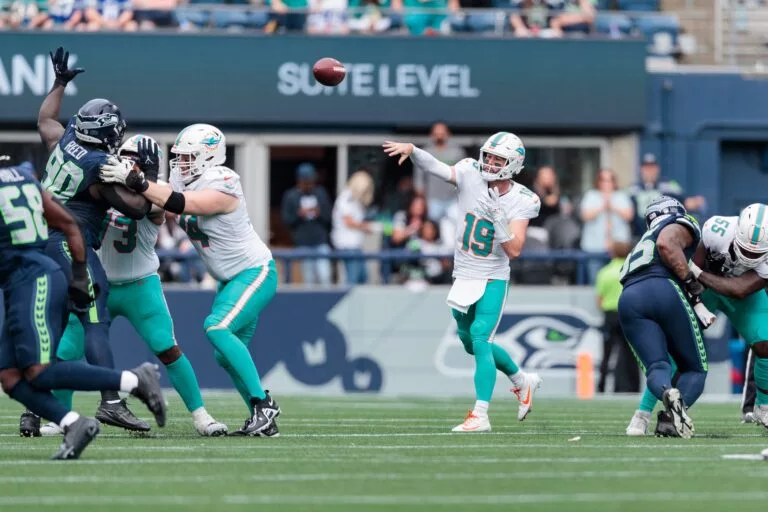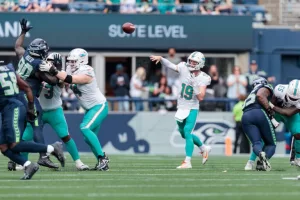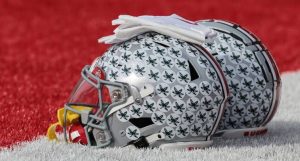
Sep 22, 2024; Seattle, Washington, USA; Miami Dolphins quarterback Skylar Thompson (19) throws the ball during the second quarter against Seattle Seahawks at Lumen Field. Mandatory Credit: Kevin Ng-Imagn Images
BREAKING NEWS:The Underwhelming Miami Dolphins Quarterbacks has finally Create The Perfect Opportunity To Bring Back The Famous Wildcat Formation…
The Underwhelming Miami Dolphins Quarterbacks: A Case for the Return of the Wildcat Formation

The Miami Dolphins have long been a team with a rich history, yet in recent seasons, their quarterback situation has often left fans yearning for stability and excitement. As they navigate another season with underwhelming quarterback performances, there’s a compelling case to revisit the famous Wildcat formation—a strategy that could not only energize the team but also maximize the potential of their current roster.
Historically, the Wildcat formation revolutionized the way teams approached offensive strategy. Introduced to the NFL with great success by the Dolphins in 2008, it turned heads with its unpredictability and versatility. The formation utilizes a direct snap to a running back or a skilled athlete, allowing for multiple options in terms of running or passing. This scheme proved particularly effective for Miami, showcasing the athleticism of players like Ronnie Brown and Ricky Williams. The success of the Wildcat was not just about gaining yards; it was about creating a dynamic offensive identity that confused defenses and provided a spark to the team.
Today, the Dolphins find themselves in a similar situation. Their quarterback play has been inconsistent, with starters unable to consistently deliver the kind of performance needed to keep opposing defenses guessing. With Tua Tagovailoa’s injury struggles and the unproven talents of backup quarterbacks, the offense has often lacked the rhythm and explosiveness required to compete in a high-octane league. This is where the Wildcat formation could play a transformative role.
By reintroducing the Wildcat, the Dolphins could leverage their existing skill set while minimizing the pressure on their quarterbacks. The team boasts a talented group of running backs, including playmakers who can thrive in a direct-snap scenario. This shift would not only provide an outlet for creativity in play-calling but also alleviate some of the burden on the quarterback position. With fewer predictable passing plays, defenses would be forced to prepare for a wider array of offensive possibilities, thereby creating opportunities for chunk yardage and big plays.
Moreover, the Wildcat formation promotes a mentality of aggressiveness and unpredictability—qualities that can invigorate both players and fans alike. In a league that often feels dominated by pass-heavy offenses, embracing a formation that emphasizes run-first tactics can set the Dolphins apart. It also plays to the strengths of the Dolphins’ current personnel, which may not be equipped to excel in a traditional aerial assault.
Defensively, teams would face the challenge of adapting to an unorthodox attack. The element of surprise is crucial in today’s NFL, and the Wildcat formation provides exactly that. Opposing defenses would have to respect multiple threats, which could open up opportunities for more conventional plays when the Dolphins do decide to pass. This strategic ambiguity could prove beneficial, especially in tight games where every yard counts.
In conclusion, as the Miami Dolphins grapple with quarterback inconsistency, the reintroduction of the Wildcat formation offers a unique solution. It would capitalize on the team’s existing strengths while injecting a sense of excitement into the offense. By embracing this strategy, the Dolphins could not only revitalize their game plan but also remind fans of the innovative spirit that once defined the franchise. The Wildcat’s potential to disrupt and innovate could be the key to turning the Dolphins’ season around.







